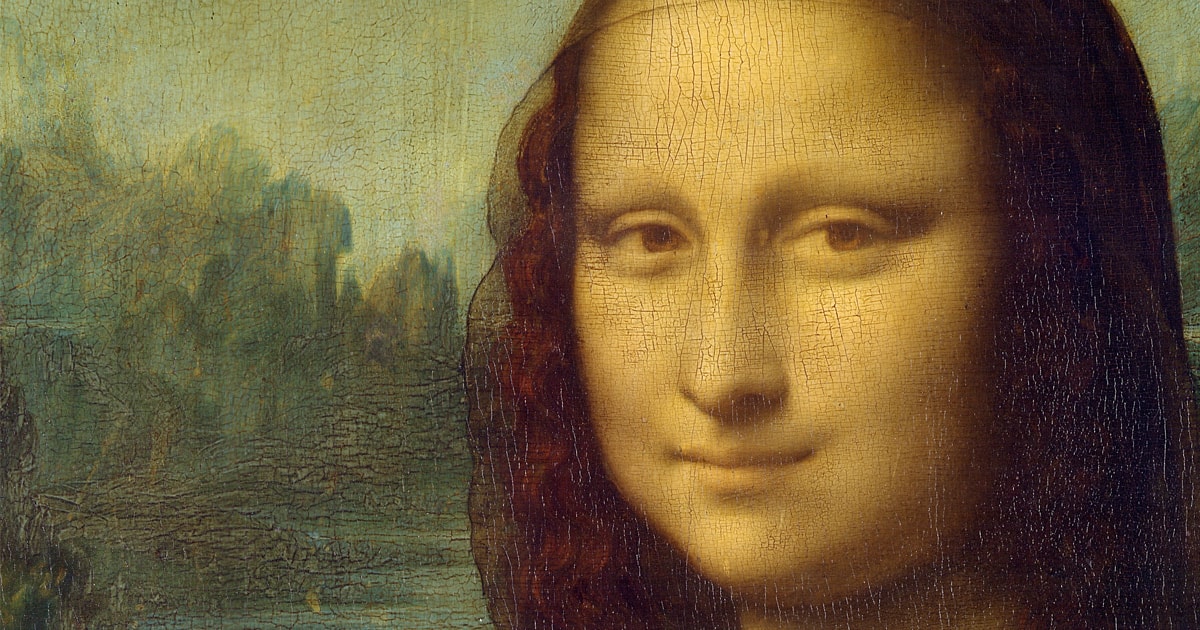
You may have heard of the Mona Lisa, or felt it through the look of her famous eyes staring at you.
If you're close enough to painting, you'll think her eyes will follow you around the room wherever you go.
A new study found that this effect can be scientifically explained, but may need to be renamed, because it does not seem to apply to the Mona Lisa.
The scientists set up an experiment where 24 participants were placed in front of a picture of Mona Lisa on computer screens and asked them to determine the direction they were looking at.
Using different image clips and varying distances, you have collected more than 2,000 ratings, with the help of a measurement ruler placed between the viewer and the image.
In the end, a team from Bielefeld University in Germany found that the 16th century masterpiece was not really looking forward - as is the case for the "Mona Lisa Effect" - but instead the painting looks to the right side at a 15.4 degree angle.
"The effect is undeniable and can be proven," said one researcher, psychologist Sebastian Loth.
"But of all the paintings, we only found this impression with the Mona Lisa."
It is essential to study that the person in the picture must stare forward, at zero angle, to maintain the viewer's perception that the looks are chasing him around the room, although the eyes in the picture do not move.
They found that the Mona Lisa was not technically qualified to have such an influence bearing her name.
Previous research on the phenomenon indicates that the angle of view must be less than 5 degrees to maintain the illusion that we are watching by someone in a painting or picture, no matter where the viewer stands, but what matters is the direction of the picture as a whole.
"This impression shows whether we stand to the left or the right and even at different distances from the picture," says Loth. The strong feeling that someone is staring at you is precisely what we mean by the influence of Mona Lisa. "
The participants in the new study have consistently pointed out that Mona Lisa's view was on the right.
Through many levels of zoom and various photo clips, she pointed out that her eyes may not follow you as accurately as you would if you visited the Louvre in Paris or watched a copy of this famous artwork elsewhere.
According to the researchers in this new study, the feeling that we are sometimes observant tells a lot about us in fact, and the same applies to the things we observe.
"People are very good at determining whether there are other people looking at them or not," says Gernot Horstmann, a member of the research team. This cognitive psychology proved in the 1960s. "
"The Mona Lisa Effect" shows our strong desire to be seen, to be the focus of someone else - and that we like to be connected to someone even if we do not know him at all.
The search was for more than just one treatment of the most visual illusions in the art world.
One of the areas in which this effect can benefit us is in the design of computer simulations or video games, and wherever digital characters arise.
Virtual avatar can be used to prevent this look, upload someone's look, interact with the player and make hidden claims, just like humans do.
This will be more important, since virtual reality worlds are becoming more sophisticated and complex.
At present, the official scientific judgment is: no. The Mona Lisa does not watch you all the time, although the Mona Lisa influence itself is quite real.
The researchers explain that they have asked for standards-based judgments that are less likely to conflict with bilateral beliefs.
"We conclude from the measurements that the lack of evidence is due to the fact that the allegations are essentially false: Mona Lisa does not look to the viewer."
Perhaps then researchers can investigate another mythical feature of this painting - that slight smile of the Mona Lisa, which seems to always move according to the angle from which it is seen.

.png)






0 Comments